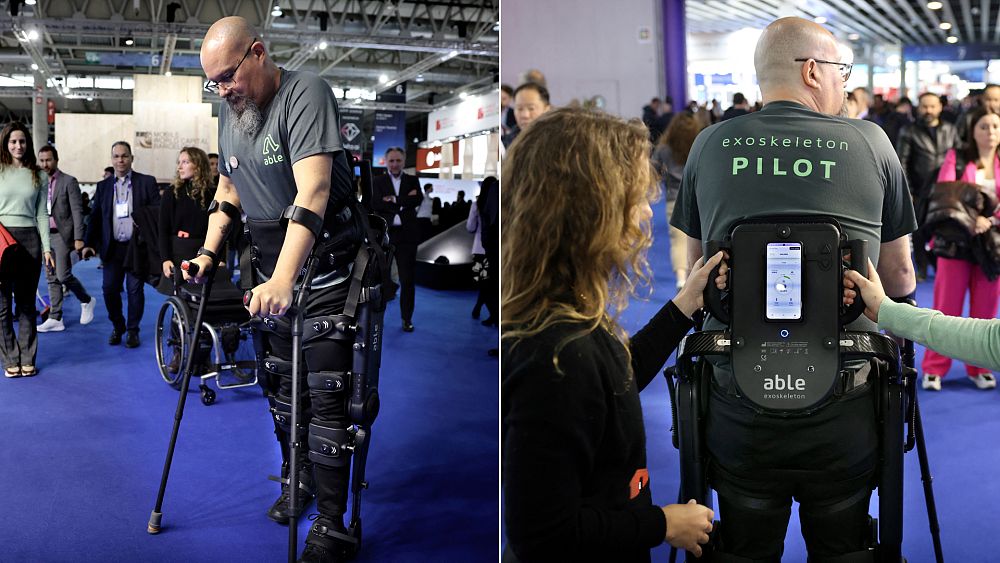
When Ricard Hernandez first started testing a Catalan company’s exoskeleton for wheelchair users, he probably never imagined a few years later he would be stood upright, moving independently and playing table tennis against the King of Spain.
But that’s what happened at Mobile World Congress this year, as King Felipe VI paid a visit to ABLE Human Motion’s stand to see their exoskeleton in action.
The company, which is a spin out from the Polytechnic University of Catalonia, is developing what they hope will be a more affordable device than what is offered by competitors.
The exoskeleton is enabling people who have spinal cord injuries and lost their mobility to stand – and even walk.
“It would change my life completely” to have the exoskeleton full time, Hernández, told Euronews Next.
Hernández was injured in a work accident 24 years ago, leaving him reliant on a wheelchair for mobility. As well as giving him the chance to live life standing upright again, Hernández says it also improves his emotional health, his therapy and helps him to avoid illness.
He has been a volunteer “pilot” for the company for some years now, and the first time he used the exoskeleton device it was fairly “rudimentary” he said.
Now in its seventh iteration, “the change has been immense”.
“With my relatively low injury and my fairly good balance, I can use it as you saw a moment ago, completely autonomously, simply with a remote control that I carry on a crutch or walker, which I use to control all the functions with two buttons.”
ABLE is aiming to start producing its exoskeleton commercially by the spring or summer of this year, with a price point between €40,000 to €60,000.
‘A really emotional experience’
“It’s a device that you strap on around your legs, and then there’s a motor at the knee and at the hip that drives the motion of walking for you to be able to walk again, for somebody who doesn’t have sensation or movement in their legs from a spinal cord injury,” explained Katlin Kreamer, product manager at ABLE Human Motion.
She told Euronews Next for people trying the device for the first time “it can be a really emotional experience for them to be standing again after so long”.
It also helps physiotherapists in hospitals and clinics because doing this sort of work is a “really physically demanding task”.
The device takes the manual labour out of the process for the therapists, allowing them to provide better treatment to patients.
“The first step is to offer it in a clinical setting like a hospital. And then the next step in our roadmap would be to make a personal use device for someone to be able to take home and use in their daily life,” she said.

